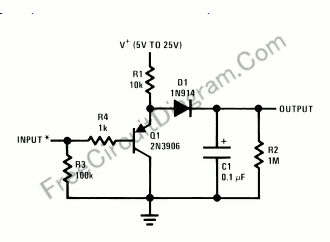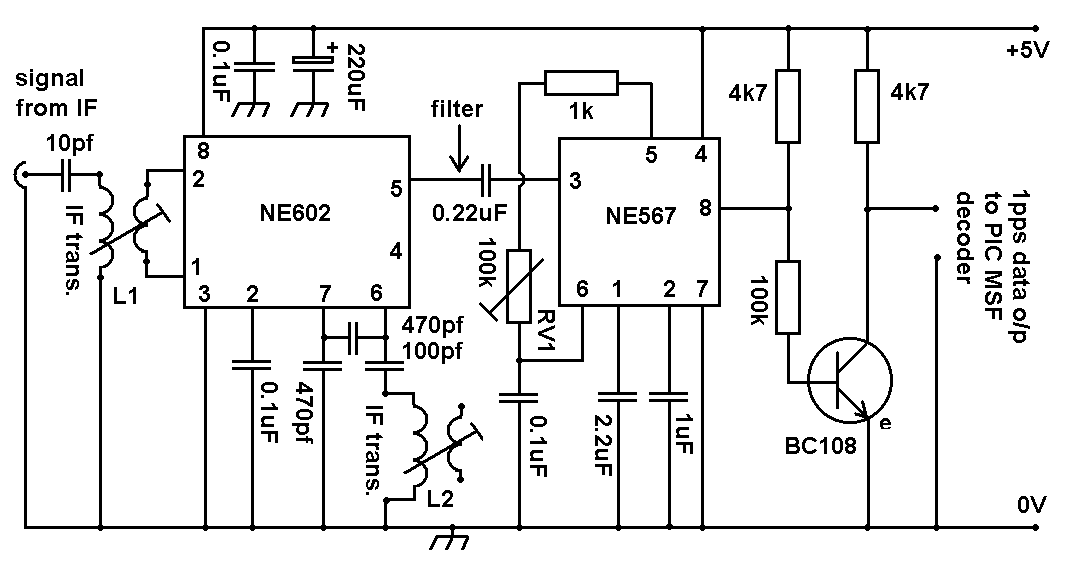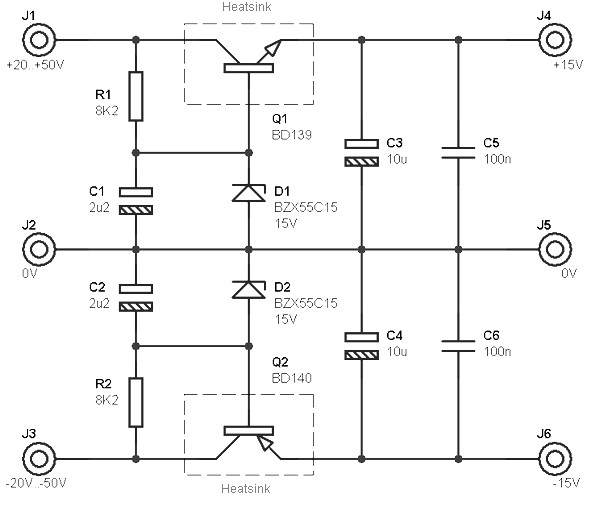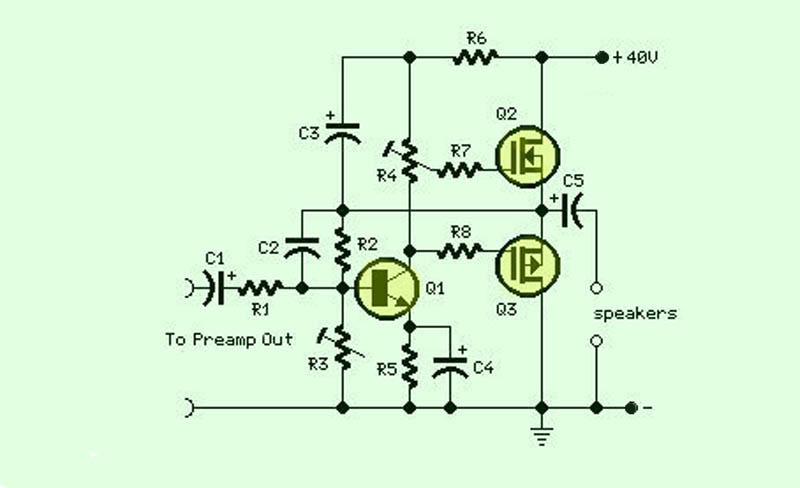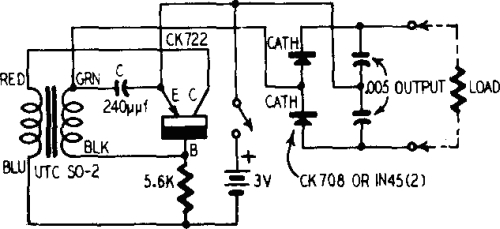
Economical Transistor Radio

The schematic diagram illustrates an audio stage utilizing a common-collector circuit. This configuration does not dampen the tuned circuit; rather, it enhances its response, resulting in improved sensitivity and selectivity. Due to the low supply voltage, the subsequent audio amplifier requires three transistor stages. Volume control is achieved through a potentiometer. This radio operates effectively with an internal ferrite rod measuring approximately 1 cm in diameter and 10 cm in length, which is wound with about 50 turns of enameled copper wire. Additionally, using a two-meter external wire aerial allows for the reception of even more stations. The design is economical in terms of components and has minimal power consumption, drawing only 10 mA, which enables an alkaline AA cell to last around 200 hours of operation.
The schematic diagram presents a common-collector amplifier configuration, often referred to as an emitter follower. This design is characterized by its high input impedance and low output impedance, making it ideal for interfacing with other stages of the audio circuit. The common-collector stage does not introduce significant loading on the tuned circuit, which maintains the circuit's quality factor (Q) and enhances the frequency response. This feature is crucial for applications where sensitivity and selectivity are paramount, such as in radio receivers.
The audio amplifier's design necessitates three transistor stages due to the low supply voltage, which limits the output capabilities of each individual stage. The use of multiple stages allows for adequate amplification of the audio signal without distortion, ensuring clear sound reproduction. The potentiometer serves as a variable resistor, allowing for user-adjustable volume control, which is essential for user-friendly operation.
The internal ferrite rod antenna, with its specified dimensions and winding, is designed to optimize signal capture for the radio frequency range of interest. The 50 turns of enameled copper wire create a tuned circuit that resonates at specific frequencies, enhancing signal reception. The addition of a two-meter external wire aerial significantly improves reception capabilities, allowing the radio to access a broader range of stations.
Power efficiency is a notable feature of this radio design. With a current draw of only 10 mA, the circuit is capable of operating for extended periods on a single alkaline AA cell. This low power consumption is advantageous for portable applications, extending the usability of the device without frequent battery replacements. Overall, this schematic represents a well-engineered solution for compact, efficient audio amplification in radio applications.The schematic diagram shows an audio stage with a common-collector circuit. This does not damp the tuned circuit, but instead actually increases its response. This yields good sensitivity and selectivity. Due to the low supply voltage, the subsequent audio amplifier needs three transistor stages. The volume is adjusted using the potentiometer. Thi s radio works well using an internal ferrite rod (around 1 cm diameter and 10 cm long) with a winding of around 50 turns of enameled copper wire. With a two-meter external wire aerial, you can receive even more stations. This radio is not only economical in terms of components, it also needs very little juice`: since the current consumption is only 10mA, an alkaline AA cell will easily last for around 200 hours of operation.
🔗 External reference
The schematic diagram presents a common-collector amplifier configuration, often referred to as an emitter follower. This design is characterized by its high input impedance and low output impedance, making it ideal for interfacing with other stages of the audio circuit. The common-collector stage does not introduce significant loading on the tuned circuit, which maintains the circuit's quality factor (Q) and enhances the frequency response. This feature is crucial for applications where sensitivity and selectivity are paramount, such as in radio receivers.
The audio amplifier's design necessitates three transistor stages due to the low supply voltage, which limits the output capabilities of each individual stage. The use of multiple stages allows for adequate amplification of the audio signal without distortion, ensuring clear sound reproduction. The potentiometer serves as a variable resistor, allowing for user-adjustable volume control, which is essential for user-friendly operation.
The internal ferrite rod antenna, with its specified dimensions and winding, is designed to optimize signal capture for the radio frequency range of interest. The 50 turns of enameled copper wire create a tuned circuit that resonates at specific frequencies, enhancing signal reception. The addition of a two-meter external wire aerial significantly improves reception capabilities, allowing the radio to access a broader range of stations.
Power efficiency is a notable feature of this radio design. With a current draw of only 10 mA, the circuit is capable of operating for extended periods on a single alkaline AA cell. This low power consumption is advantageous for portable applications, extending the usability of the device without frequent battery replacements. Overall, this schematic represents a well-engineered solution for compact, efficient audio amplification in radio applications.The schematic diagram shows an audio stage with a common-collector circuit. This does not damp the tuned circuit, but instead actually increases its response. This yields good sensitivity and selectivity. Due to the low supply voltage, the subsequent audio amplifier needs three transistor stages. The volume is adjusted using the potentiometer. Thi s radio works well using an internal ferrite rod (around 1 cm diameter and 10 cm long) with a winding of around 50 turns of enameled copper wire. With a two-meter external wire aerial, you can receive even more stations. This radio is not only economical in terms of components, it also needs very little juice`: since the current consumption is only 10mA, an alkaline AA cell will easily last for around 200 hours of operation.
🔗 External reference
